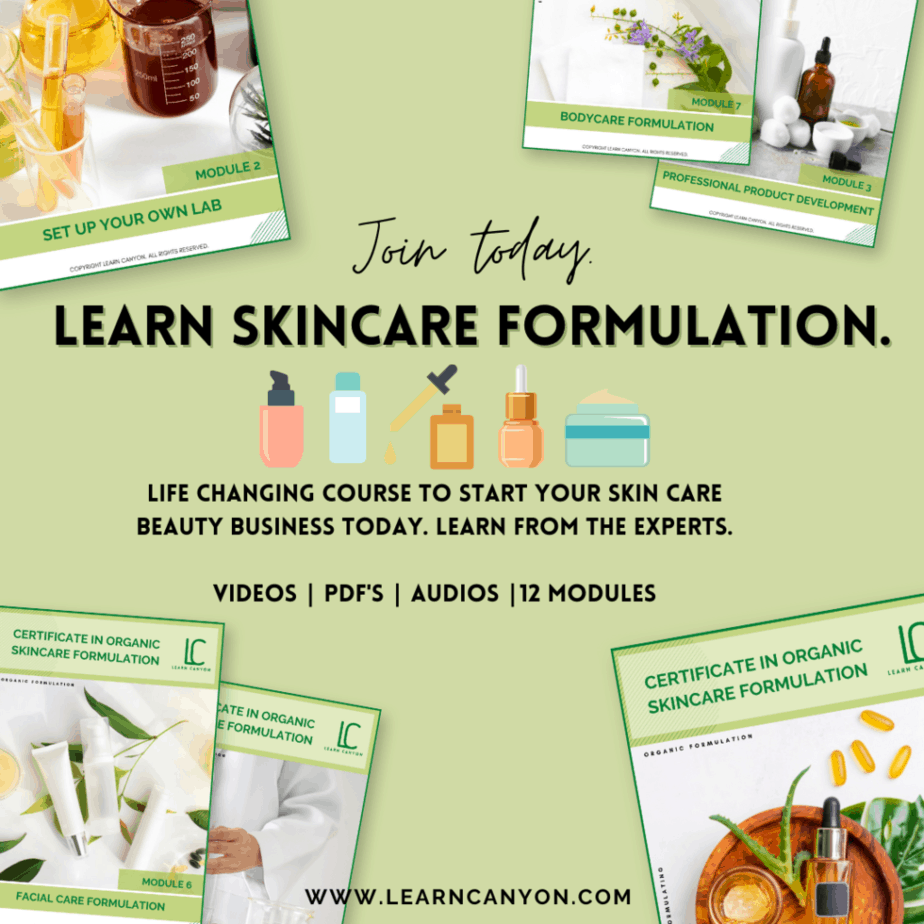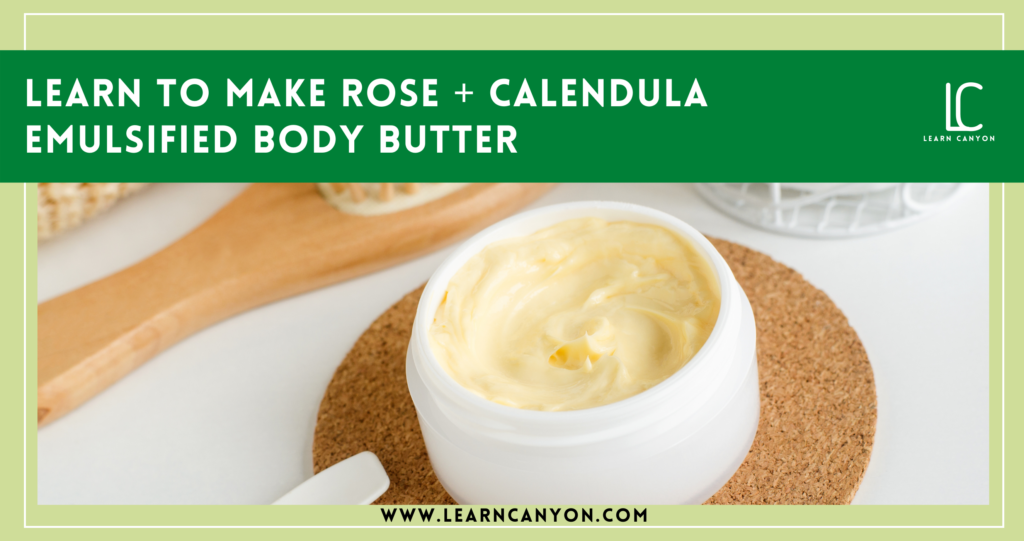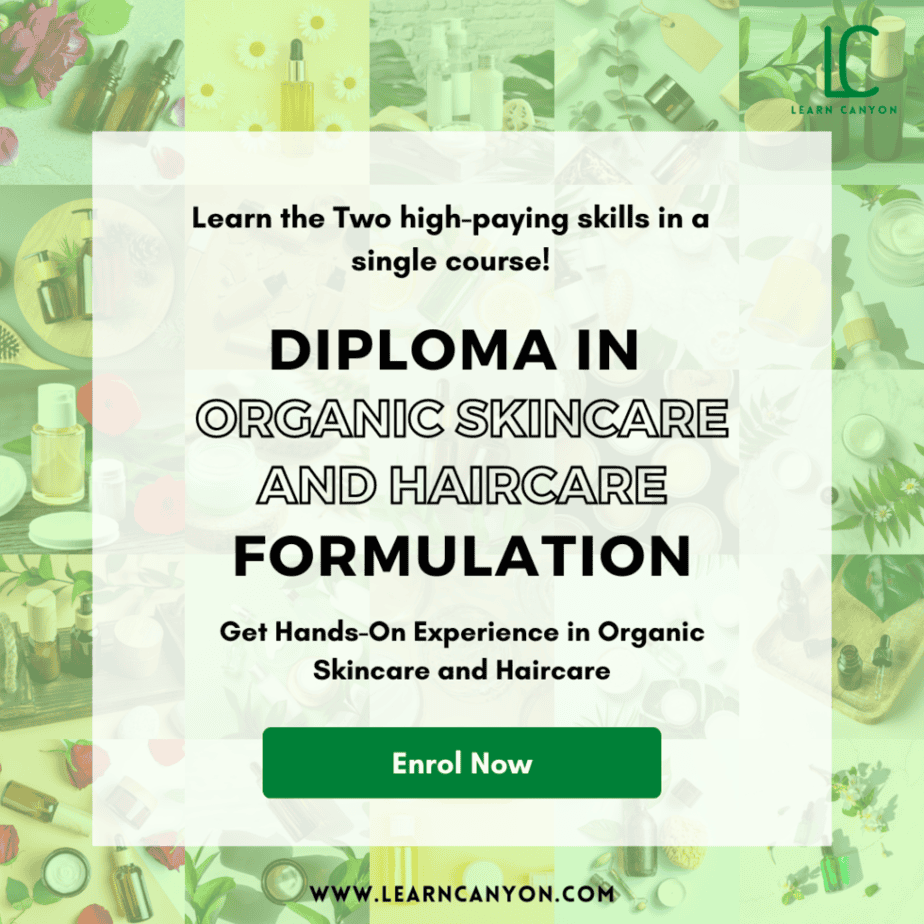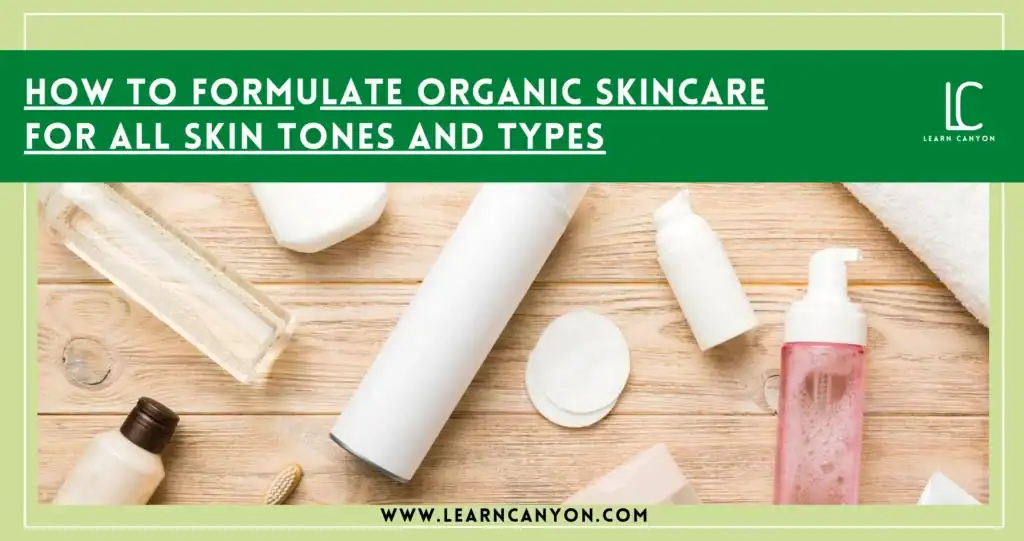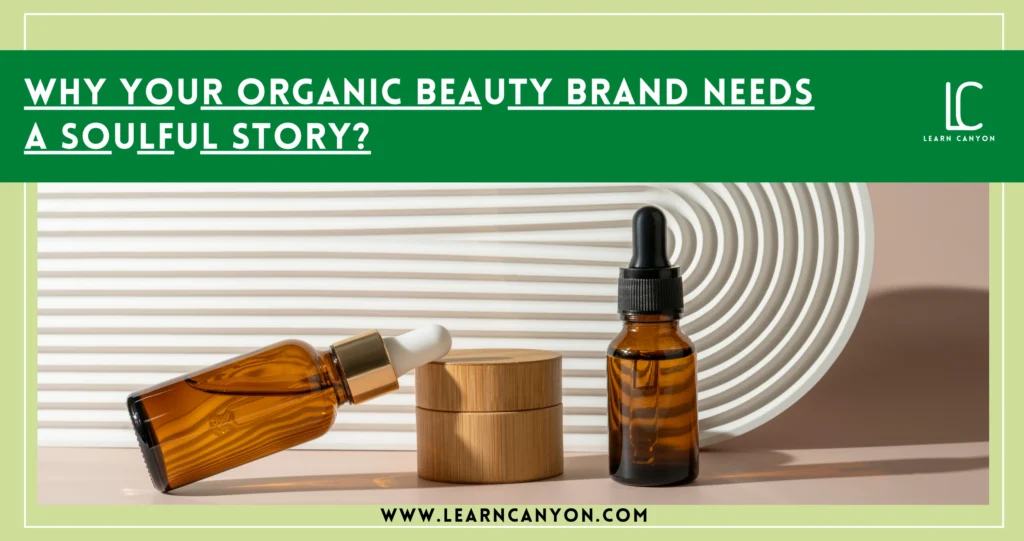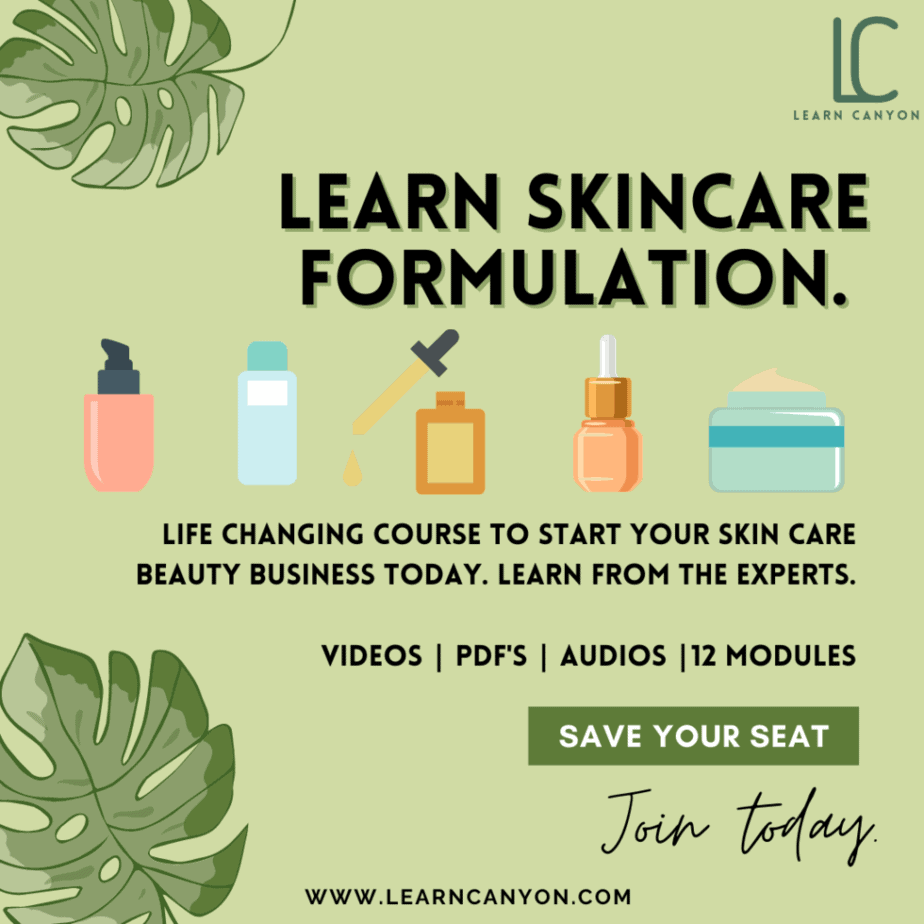In one of my earlier blogs, I showed you how to make a whipped body butter from a combination of oils and butter.
Traditional whipped body butters are a great beginner project because they are oil-based (without water), not needing preservatives nor emulsifiers. Today’s task is to attempt an emulsified body butter.
Body Butters have become a popular addition to many people’s regular skin-care routines, providing an extra burst of hydration to thirsty skin. Body butters predominantly contain butters as well as oils, resulting in a delectably rich moisturising delight that glides onto the skin like a fine silk.
Body butters must be stable, should not melt quickly and become messy, and the skin should stay velvety smooth for hours after application thanks to a simple emulsification procedure.
Whether deliciously scented or unscented, most people find that emulsified body butters don’t have the overly greasy feel that regular whipped butters do.
Body butters, when applied to clean skin, can provide a delightful softer skin year-long, a treat achieved by protecting and moisturising dry, worn skin, leaving it feeling hydrated, nourished, and youthfully revived.
Traditional whipped body butters are anhydrous (without water) and made out of a single butter or a combination of butters and oils that are whipped and packed.
They’re gorgeous, but they might leave a greasy residue or become unstable, dissolving as the temperature rises. This might be an issue during transportation or even in a humid restroom.
Today we shall attempt an emulsified body butter in order to minimise the greasy feel and lessen the risk of providing a jar of melting butters.
Also Read How To Formulate A Simple Body Butter?
Emulsifying is the process of stabilising and binding substances that don’t want to mix. Unlike anhydrous (waterless) body butters, emulsified body butters, like lotions and creams, contain liquid and an emulsifying agent or wax that acts as a moderate stabiliser, improving the consistency and texture of the final product.
This may help to replace the greasy feel with a silkier one, as well as improve the body butter’s capacity to withstand higher temperatures.
If we compare Body butters with Emulsified body butters we will find that where,
Traditional anhydrous body butters, have the disadvantage of being unable to draw moisture into the skin in the absence of water.
They can also make some people feel heavy or oily. While the inclusion of a starch such as arrowroot powder can help, it will never feel as light as a lighter product with water.
Its counter part the emulsified body butters are more moisturising and still do not leave a oily greasy feel on the skin. The emulsified body butter combines the advantages of the butter with that of the cream. It is also more protective and nourishing than a light lotion, yet lighter and more hydrating than a conventional body butter.
What are emulsified body butters?
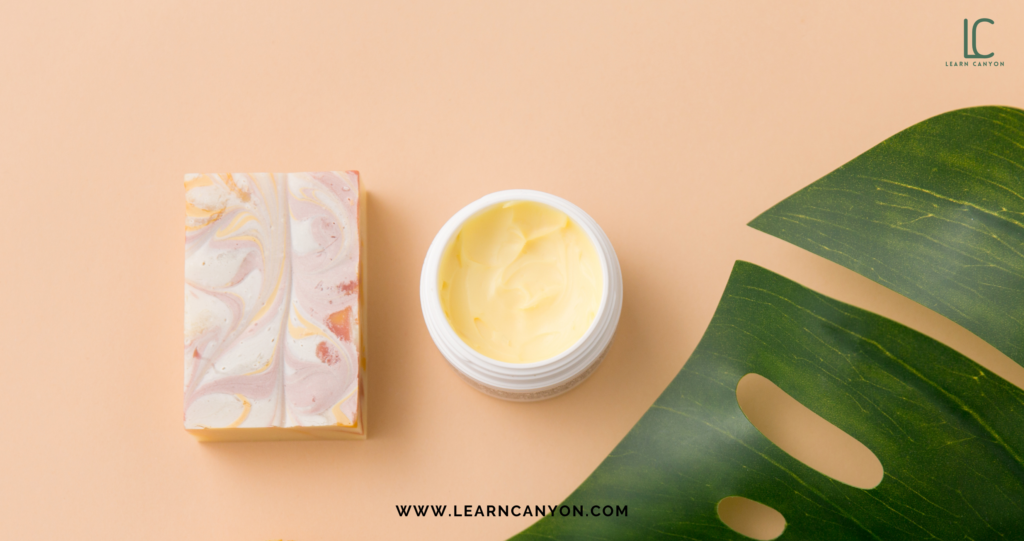
Emulsified body butters are a form of thick cream or lotion that contains an emulsifying wax or an emulsifier.
Although most emulsified body butters contain some water or water-based compounds like hydrosols, the amount is usually smaller than in a lotion.
Oils and butters are frequently used in greater quantities than water-based substances. Water is found in greater quantities in lotions than in other products.
Some emulsified body butters don’t use water and instead use emulsifying wax as a thickening agent or to increase the butter’s feel.
With it’s unique formula, body butter can help prevent your skin from dryness while also assisting in the recovery of rough or dry skin. It accomplishes this by trapping moisture.
It can also aid skin that is losing its capacity to stay moisturised, healthy-looking, and bright and radiant as it ages.
Special compounds, such as emollients to soften the skin and humectants to enhance moisture, may be included in some formulae to address specific skin concerns.
So, an emulsified body should contain some of the ingredients from these categories;
Oils and butters:
A traditional body butter, is a product that should have a combination of butters and oils. These oils and butters can be like Almond oil, Macadamia nut oil or like coconut oil and some butters like shea butter, cocoa butter, mango butter or kokum butter.
Water or hydrosols:
For the water phase that is emulsified with the butters or oils we can use some hydrating hydrosols like rose hydrosol, aloe vera juice, etc. and humectants like hyaluronic acid, glycerine, etc.
Emulsifier:
Depending upon the type of emulsion that is weather it is oil in water or water in oil an appropriate emulsifier will be used for example BTMS 50 which is a self-emulsifying wax or Olivem 900 which is a water in oil emulsifier. The emulsifier choice also depends on the waxes and oils used in the formulation.
Other ingredients like the necessary preservative, vtamins like Panthenol and vitamins E or C can be added according to choice and effect desired.
Formulation:
Phase A
Distilled Water- to make 100%
Rose hydrosol- 20%
Glycerine – 3%
Caprylic/capric triglyceride – 5%
Panthenol – 0.5%
Phase B
Shea Butter- 26.6%
Cocoa Butter- 9.4%
Coconut Oil- 5.5%
Calendula infused in jojoba Oil- 5%
Camellia seed oil- 5%
Rosehip seed oil – 5%
Acai seed berry Oil- 3%
BTMS 50 – 8%
Cetyl Alcohol- 2%
Beeswax – 2%
Phase C
Iscaguard PEG- 1%
Vitamin E- 0.5%
Frankincense EO- 0.5%
Let’s, us understand the function and of each ingredient in the formulation
Distilled Water:
It acts a major solvent for the water-soluble components of the formulation.
We only use water that is free of toxins, pollutants and microbes in the formulation of cosmetics and personal care products. We all know by now that distilled water has exceptional purity and has had all impurities removed from it.
Rose hydrosol:
Rose hydrosol an ingredient of the water phase is the water soluble fraction of rose distillate, which is obtained during the manufacture of rose essential oil. Rose hydrosol is known to soothe the skin and acts as an astringent and make pores appear smaller. The anti-inflammatory benefits of rose hydrosol are well-known.
Rose hydrosol’s natural oils give gentle hydration and cooling comfort. Rose hydrosol can help people with irritated skin, acne because of its anti-inflammatory and antibacterial qualities.
Glycerine:
Glycerin is a humectant, which means it attracts water to the skin’s surface from both the deeper layers and the atmosphere. Glycerin aids in the retention of moisture in the skin. This provides hydration to the skin.
It helps to hydrate the skin, reduce dryness, and rejuvenate the skin’s surface.
It is also an emollient, meaning it softens the skin.
Glycerine moisturises, creates a calming sensation, tightens and firms the skin, provides protection by creating a barrier, smooths the skin, exfoliates, brightens and improves the complexion.
Can be used on all skin types.
Glycerin also has antibacterial qualities thus it can help to keep the skin healthy.
Caprylic/capric triglyceride:
It acts as an emollient. Coconut oil and glycerin are commonly combined to make it. Capric triglyceride is another name for this component. It’s also known as fractionated coconut oil on occasion.
It serves as an antioxidant and helps to smooth the skin. It also acts as a binder for other components and can act as a preservative to help active ingredients in cosmetics last longer. It aids to:
increase the product’s shelf life
impart a light and non-greasy gloss to your skin and
increases the amount of antioxidants in the product
Panthenol:
Panthenol is a stable form of vitamin B5 and can bind and hold on water effectively, resulting in skin that’s soft and moisturized.
Hence, panthenol is known for its repairing, soothing and moisturizing properties. Panthenol is used in this formulation as it can help in effortlessly spreading the butter and achieve complete coverage.
Another advantage that panthenol holds over other common moisturizing ingredients is that it acts as both an emollient and a humectant.
Emollients seal any cracks in the skin, and humectants attract water to the skin thus repairs & rejuvenates skin cells.
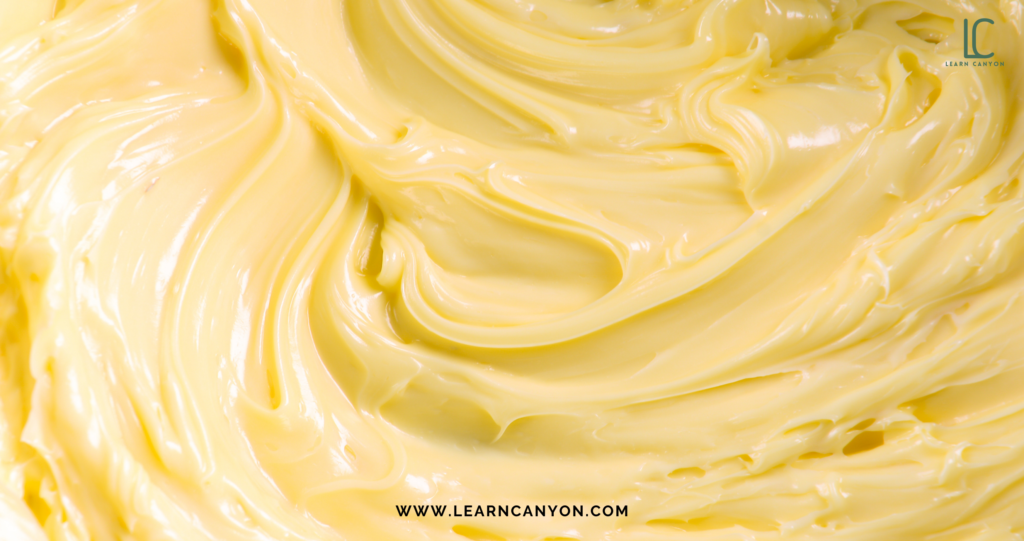
Shea Butter:
Shea butter is the major contributor to the oil and butter phase. It is made out of nuts from the African shea tree. It is high in Vitamins A and E and also contains fatty acids. Shea butter is an effective cosmetic ingredient for softening skin due to its high content of fatty acids and vitamins. Anti-inflammatory and therapeutic effects are also found in shea butter.
Shea butter can help to condition, tone, and soothe your skin, especially on your face.
Cocoa Butter:
It is a potential hydrator Hydrator and helps heal chapped skin. it acts as a moisturizer and prevents signs of aging.
It is rich in fatty acids and antioxidants which act as the free radical scavenger and prevents wrinkles and fine lines, dark spots and dull skin. it helps reduce stretch marks and scars. It is good for sensitive skin.
Coconut Oil:
Coconut oil, commonly known as Cocos Nucifera (Coconut) Oil, is a semisolid, white to off-white oil. Coconut, being a good humectant, has a hydrating effect and minimises water loss when applied topically.
Calendula infused in jojoba Oil:
This is obtained by covering the dried calendula flowers with Jojoba Oil. This calendula-infused jojoba oil has a pleasing fragrance and can be used straight for dry or blemish-prone skin, it is best suited for leave on products to be applied on face & neck to diminish fine lines & wrinkles.
Calendula has antibacterial and anti-inflammatory effects, as well as the ability to hasten wound healing.
Camellia seed oil:
It has a silky, velvety feel that absorbs nicely into the skin and boosts radiance without leaving an oily finish.
It is a golden-yellow, lightweight, slightly scented oil with a silky, velvety feel that sinks delightfully into the skin and boosts radiance without leaving an oily finish.
It’s high in anti-aging ingredients like Oleic Acids, Linoleic Acids, Squalene, Vitamin E, Vitamin A, and helpful minerals, making it an excellent emollient and antioxidant.
Rosehip seed oil:
Rosehip oil is high in vitamins and vital fatty acids, which are beneficial to the skin. There are also phenols in it, which have been proven to have antiviral, antibacterial, and antifungal activities.
Rosehip oil is frequently used as a carrier oil for essential oils that are too potent to apply straight to the skin.
Rosehip oil is a dry oil that easily absorbs into the skin.
It hydrates, Moisturizes, helps to exfoliate and brightens skin, boosts collagen formation, Helps reduce inflammation, protects against sun damage. Helps reduce hyperpigmentation, reduce scars and fine lines. It helps boost immunity.
Acai Berry Seed Oil:
Acai Berry Seed Oil, Cold-Pressed and Refined, can help to moisturise and nourish the skin while also protecting it from environmental damage that can cause new wrinkles to form.
Acai’s potent antioxidants can be used to protect the skin and hair from damaging substances like free radicals and counteract their effects.
It is also high in minerals and vitamins, including vitamin C, which is important for protecting and rebuilding hair and skin.
BTMS 50:
Behentrimonium Methosulfate (and) Cetyl Alcohol (and) Butylene Glycol
BTMS 50 is a high-performance cationic self-emulsifying wax. It’s employed as a strong conditioning agent, as well as an antistatic and softening agent. It gets along well with both cationic and nonionic surfactants. It forms electro-neutral salts when it combines with anionic surfactants.
It has a wonderful smooth, powdered skin sensation. This makes your body butter extremely gentle and non-irritating.
Cetyl Alcohol:
It is an emollient, emulsifier and thickening agent that improves the feel of the product and give it a sheen.
Cetyl alcohol is a wax like solid added to lotions and creams to help stabilize and bind their ingredients together. Cetyl alcohol helps prevent creams from separating into oil and liquid.
A chemical that helps to keep liquid and oil together is known as an emulsifier. It may also make a product thicker or increase the product’s ability to foam.
It’s great at protecting the skin barrier from drying out and preventing water loss from the surface of the skin.
Beeswax:
Beeswax has been used for its unique chemistry, which allows it to produce creamy textures in the body butter. The free fatty acids are employed to make in-situ emulsifiers, improving the emulsified butter’s stability.
Iscaguard PEG:
Phenoxyethanol is a flexible, commonly used preservative for personal care formulations. Iscaguard PEG is a mixture of Phenoxyethanol and Triethylene Glycol.
Triethylene glycol is used as an adjuvant to boost the effectiveness of active substances, reduce surface activity, make products easier to apply, and blend multiple actives into a single solution.
Vitamin E:
Vitamin E in the form of alpha-tocopheryl acetate (ATA) is commonly found in skin care products. Tocopheryl acetate, tocopherol acetate, and vitamin E acetate are some of the other names for Vitamin E.
Vitamin E is an antioxidant, which means that it can stop or reverse the damage that free radicals cause to cells. It can also reduce inflammation around the body.
Frankincense EO:
For its toning and rejuvenating properties, frankincense is one of the most important oils for invigorating and repairing skin damage, especially in mature skin. It possesses antibacterial and anti-inflammatory properties, making it effective for wound healing. Its characteristic perfume has a calming and uplifting effect on the nervous system.
How to make the Emulsified Body Butter?
To start formulating we need to follow a few steps before doing the actual formulation. We have talked about these a number of times.
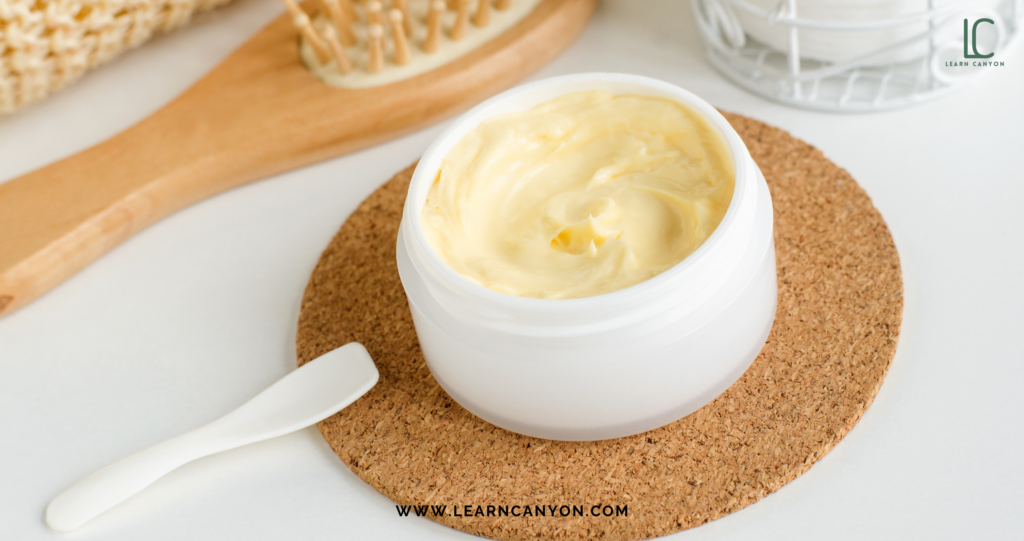
- The first step is to write down the formulation correctly in percentages and calculate it accordingly in grams.
- Collect the ingredients according to the formulation and have them ready on the working table.
- Collect all the equipments like measuring cylinders, weighing balances, mixing equipments, beakers, heating mantles, thermometers, etc.
- Sterilize all the equipments appropriately.
- Accurately measure all the ingredients according to the formulation.
- In a heat-safe container, combine the oils and butters with the emulsifying waxes from the phase B to form the body butters.
- Then, in a separate heat-safe container, combine the water phase A.
- Heat the waxes and butters in both containers over a water bath (or in a double boiler) until completely melted.
- Remove the containers from the water bath and mix the ingredients in a container large enough to comfortably handle the contents and blend them with an electric beater or immersion blender while they are still hot.
- An electric mixer will add air to the mixture, resulting in a whipped butter texture. This is particularly true in the case of the water-in-oil recipe.
- Blend the components of phase C once the cooling starts and the temperature reaches 45 degrees. Blend together until they are well combined and the mixture is opaque (around 10 seconds).
- Blend the ingredients multiple times as it is cooling. To speed up the cooling process, do it over an ice bath.
Allow the mixture to rest for a minute or so between short bursts of blending if you don’t use an ice bath. As the mixture cools, continue to blend it every now and then. You’ll notice that it thickens and becomes sturdy over time.
- Once your body butter has cooled, you may package it by spooning or piping it into a storage container.
I like to use jars with wide mouth and lids for body butters. Piping is best for anhydrous or water-in-oil body butters.
Frequently Asked Questions
What Would Be The Shelf Life Of This Formulation?
We are formulating water in oil emulsified body butter and because this product incorporates water which supports microbial growth and waxes which provide nutrition in form of fats, it has the potential for microbial growth.
While we are adding a broad-spectrum preservative this will allow us to store our finished body butter at room temperature and helps increase the shelf-life. It would be wise to finish the product within 2-3 months


